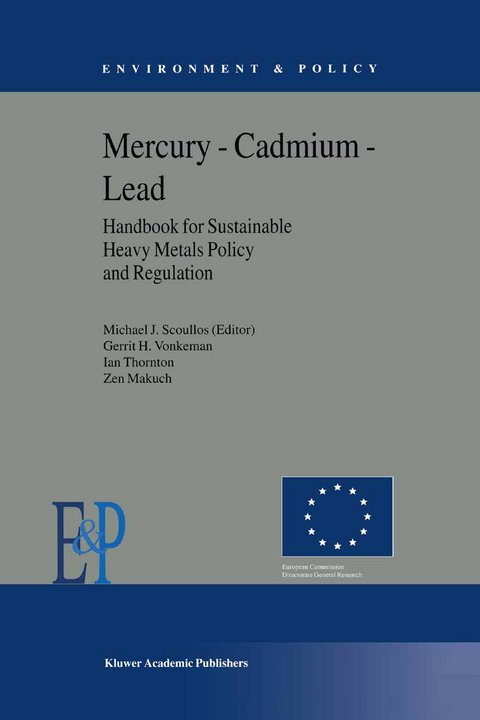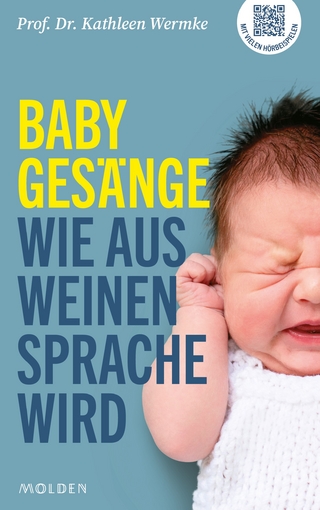
Mercury — Cadmium — Lead Handbook for Sustainable Heavy Metals Policy and Regulation
Springer-Verlag New York Inc.
978-1-4020-0224-3 (ISBN)
In addition, they are thoroughly analysed for consistency, future developments and trends and, of course, their consequences for sustainable development and future policy and regulation.
The second part, on policy and regulation, begins with an extensive and fundamental consideration on the characteristics of a sustainable heavy metals policy, whereby innovative policy tools are developed. In many aspects, these considerations are also valid for other metals and even non-metallic persistent substances.
Addressing the European Union in particular, its policy-making structure and practice are critically analysed, in order to develop feasible and viable guidelines for long-, medium- and short-term EU policy measures.
The results of this exercise are then applied to the three heavy metals. In each of these three chapters, all existing EU measures are presented in detail and confronted with better practices elsewhere, resulting in many suggestions and recommendations for the future. In the last chapter, the main conclusions and recommendations are carefully summarised. Together with a very extended table of contents, this makes the book easily accessible, in spite of its volume. This Handbook is a must for policy-makers and administrators at all levels, as well as for their counterparts in a wide variety of industries. In addition, it is well-suited for environmental science courses at academic or higher professional level.
Table of contents (condensed).- 1 Introduction.- 1.1. About this book.- 1.2.Environmental policy in the EU.- 1.3.Heavy metals and the EU.- 2 Methodology.- 2.1.General.- 2.2.Specific research activities.- 2.3.Practical findings.- 3 Mercury.- 3.1.Introduction.- 3.2.World production, resources and reserve bases.- 3.3.World stocks and strategic stockpiles of mercury.- 3.4.Mercury prices.- 3.5.Factors that influence mercury trade.- 3.6.Global trade flows of mercury.- 3.7. Mercury uses in the world economy.- 3.8. Mercury flows through the environment.- 3.9.The chlor-alkali industry.- 3.10. Mercury flow sheets.- 3.11. Technical and economic options for policies and legislation.- 3.12. References.- 4 Cadmium.- 4.1.Presence and sources.- 4.2.Cadmium world resources and estimates for reserve bases.- 4.3.Cadmium world production.- 4.4.World stocks and prices of cadmium.- 4.5. World cadmium supply.- 4.6. World consumption of cadmium.- 4.7. Cadmium batteries.- 4.8.Cadmium pigments.- 4.9. Stabilizers.- 4.10. Electroplating and coating.- 4.11.Cadmium alloys.- 4.12.Cadmium in solar cells.- 4.13. Emissions from Cd production and processing in the EU.- 4.14. Other sources of cadmium.- 4.15. Cadmium flows and balance in the EU.- 4.16. References.- 5 Lead.- 5.1. Global lead material flows through economy and environment.- 5.2. Primary lead production in market economy countries.- 5.3. Secondary lead production in market economy countries.- 5.4. Lead smelting and refining.- 5.5.Exports and imports of lead metal.- 5.6. Lead uses and applications.- 5.7.Production of lead metal in EU Member Countries Smelting and related emissions.- 5.8.Lead recycling schemes: A review of current system within the EU.- 5.9.Lead substitutes and alternatives.- 5.10.References.- 6 Key human and environmental risks associated with mercury,cadmium and lead: (Eco)toxicology of heavy metals.- 6.1.Human health and environmental risks.- 6.2.Exposure and risk assessment models.- 6.3. Ecotoxicologyof heavy metals.- 6.4.References.- 7 Theoretical background for framing policies and legislation on heavy metals.- 7.1. Introduction.- 7.2. Fundamental considerations.- 7.3. EU Policy making methodology.- 7.4. References.- 8 Policy options for mercury.- 8.1. Questions directing policy options.- 8.2. Long-term mercury policy.- 8.3. Medium-term mercury policy.- 8.4. Short-term mercury policy.- 8.5.Policies in the USA, the EU and elsewhere.- 8.6.Recommendations for the EU.- 8.7.References.- 9 Policy options for cadmium.- 9.1.Questions directing policy options.- 9.2.References.- 10 Policy options for lead.- 10.1. Scientific and technical basis for understanding the human and environmental risks of lead.- 10.2. Tentative policy principles.- 10.3. Long-term policy approaches.- 10.4. Medium-term policy considerations.- 10.5. Key instruments for short-term policy action.- 10.6. European Community policy and regulatory reform measures: Sound practice and its Implementation value in the European Community over the short-term.- 10.7. Conclusion.- 10.8. References.- 11 Conclusions.- 11.1. Introduction.- 11.2. The most serious problems.- 11.3. Polices and legislation.- 11.4. Recommendations.- 11.5. References.- Annex 1 The partner institutes.- Annex 2 Authors and contributors.- Acknowledgements.
| Reihe/Serie | Environment & Policy ; 31 |
|---|---|
| Zusatzinfo | XVIII, 525 p. |
| Verlagsort | New York, NY |
| Sprache | englisch |
| Maße | 155 x 235 mm |
| Themenwelt | Sachbuch/Ratgeber ► Natur / Technik ► Natur / Ökologie |
| Naturwissenschaften ► Biologie ► Ökologie / Naturschutz | |
| Naturwissenschaften ► Geowissenschaften | |
| Technik | |
| ISBN-10 | 1-4020-0224-6 / 1402002246 |
| ISBN-13 | 978-1-4020-0224-3 / 9781402002243 |
| Zustand | Neuware |
| Haben Sie eine Frage zum Produkt? |
aus dem Bereich


